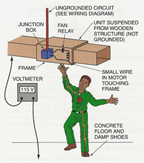
Figure 1. Wiring diagram of an electric heater circuit similar to the one in the article. (From Refrigeration & Air Conditioning Technology, 5th Edition, by William Whitman, William Johnson, and John Tomczyk, published by Thomson Delmar Learning.) (Click on the figure for an enlarged view.)
Bob went to the house and talked to the customer. The customer explained, “The thermostat is set in the “off” position today because it is so mild that we don’t need either heat or air conditioning. The indoor fan starts up from time to time and runs for a few minutes and shuts right back off, for no apparent reason.”
Bob said, “I can’t imagine what that could mean. I will check it out.”
Bob went to the garage where the indoor unit was located and started to look around. While he was standing there, the fan started up and ran for about two minutes and then shut off. Bob scratched his head and thought. He removed the fan wire from the thermostat to the terminal board so there was no chance for a circuit to be reaching the fan start relay. He decided to wait and see if this solved the problem when the fan started up again. Now, he was really confused.

Figure 2. This diagram shows the three conditions for current flow: a power source, a conductor, and a load or resistance. (From Practical Heating Technology, by William Johnson, published by Thomson Delmar Learning. (Click on the figure for an enlarged view.)
Bob explained to Btu Buddy what was happening and Btu Buddy said, “Tell me what can stop and start the fan on this system.”
Bob said, “The fan relay starts the fan upon a call for heat. The fan must be running while the compressor is running. That would be all that I would know.”
Btu Buddy then said, “Look closely at the components on the electric furnace and look at the fan circuit.”
Bob looked over the furnace fan circuit and said, “It looks like there is a temperature sensor that can start the fan. I wonder what that is for?”
Btu Buddy responded, “If the electric heat were to start up for any reason without the heat pump running, for example in emergency heat, what would start the fan?”
Bob said, “Well, I guess the temperature activated fan switch would.”
Btu Buddy said, “What would keep the fan running at the end of the heating cycle during electric heat operation to cool the furnace down at the end of the cycle? Now feel the furnace and see if you can detect any heat on the surface.”

Figure 3. This heating element is grounded to the frame and operating off of 115 V. Note, if the frame of the furnace is not grounded it would not work and the furnace would be electrically hot. (From Practical Heating Technology, by William Johnson, published by Thomson Delmar Learning.) (Click on the figure for an enlarged view.)
Btu Buddy said, “Bob, get your ammeter and see if any of the heater circuits are drawing current.”
Bob used his ammeter and checked all of the circuits. The furnace had three stages of electric heat and Bob said, “One of the circuits is drawing 10 amps; it should draw about 15 amps.”
Btu Buddy then said, “Put your ammeter on the other side of that heater and see what you get.”
Bob checked the amperage on the other side of the heater that was drawing amperage and read nothing. He said, “Boy, am I confused now.”
Btu Buddy then said, “Check the voltage to the heater. It should be 230 volts.”
Bob checked the voltage (see Figure 1 for the diagram) and said, “There is no voltage, yet it is drawing current.”
Btu Buddy said, “Remember the basic law of current flow: there must be a power supply, something to conduct the power, and a load or resistance. See what you can find out using those terms (Figure 2).”

Figure 4. This electric motor has a ground circuit in it and the furnace casing is not grounded. The technician becomes the path to ground. This is very dangerous. (From Refrigeration & Air Conditioning Technology, 5th Edition, by William Whitman, William Johnson, and John Tomczyk, published by Thomson Delmar Learning.) (Click on the figure for an enlarged view.)
Btu Buddy said, “Good work, Bob. You figured it out without too much of a problem. The heater to ground explains it all. You could see from the installation that this unit was installed correctly. We were standing up on a dry floor when we started checking the unit. If any unit is located under a house or in a wet basement, it is good practice to put one meter lead on the furnace case and the other on a close by water pipe that is grounded to see if the furnace case is electrically hot. If the furnace case is not electrically grounded and this were to happen, the furnace case would be electrically hot and dangerous. The technician could become the path to ground (Figure 4).”
Bob went to the supply house and got a new heater and installed it. He then explained to the homeowner what had happened.
As they were riding away, Bob said, “Boy, I never would have expected that. This business is full of surprises.”
Btu Buddy said, “You accumulate these experiences as you go along. I am glad we were able to find the problem.”
Publication date:12/25/2006


Report Abusive Comment